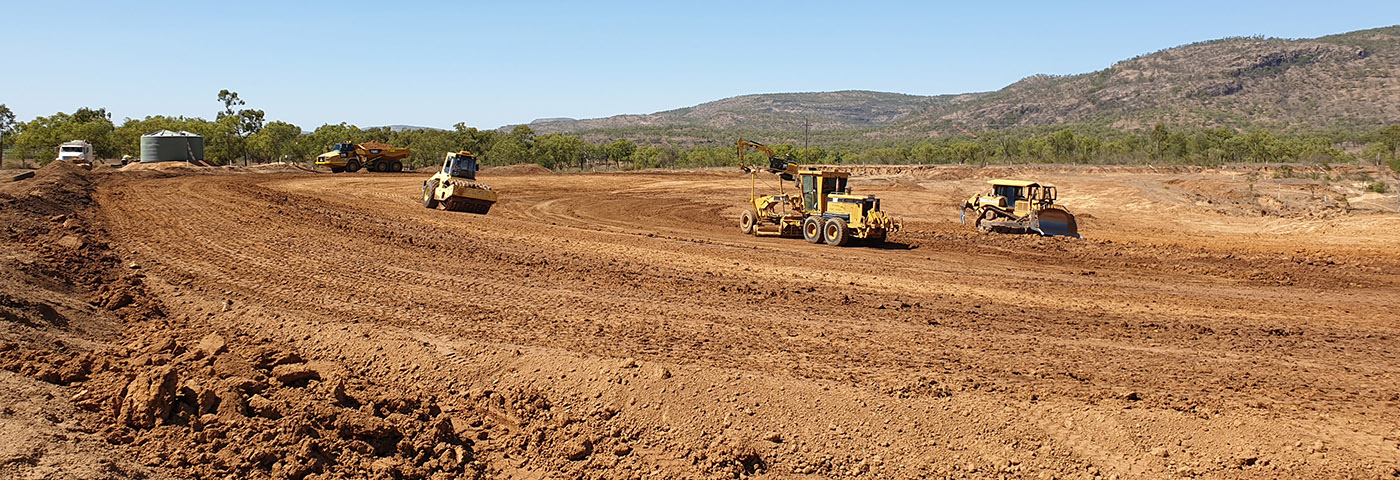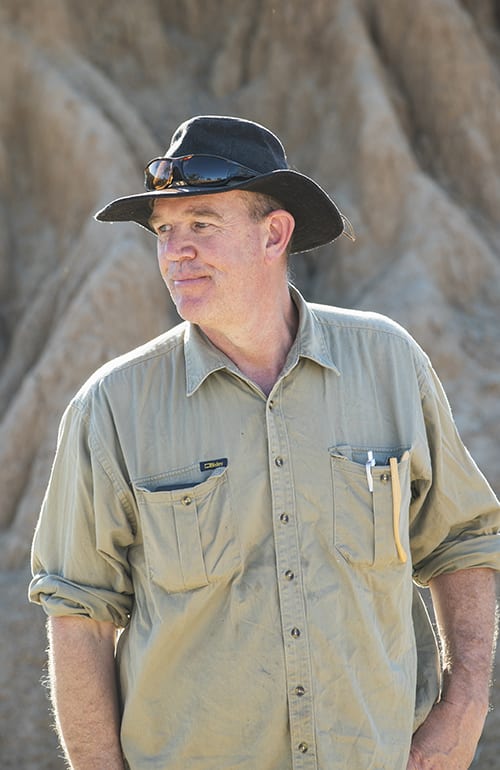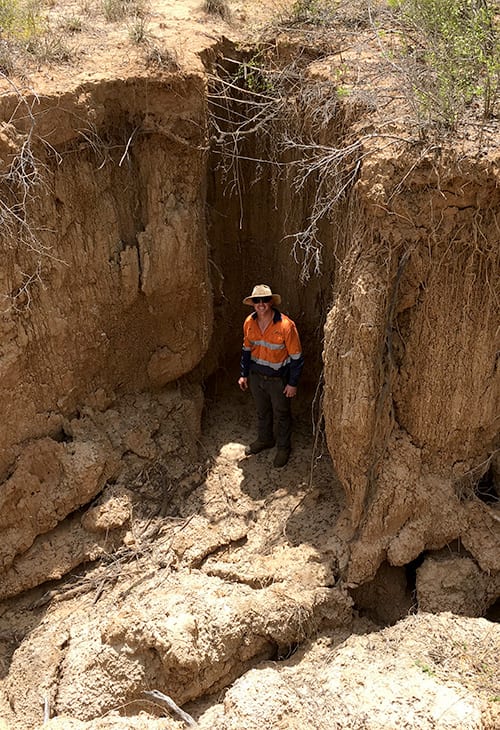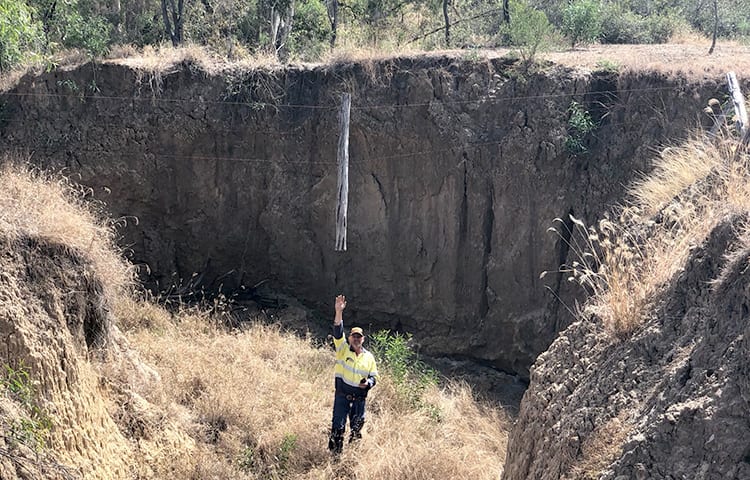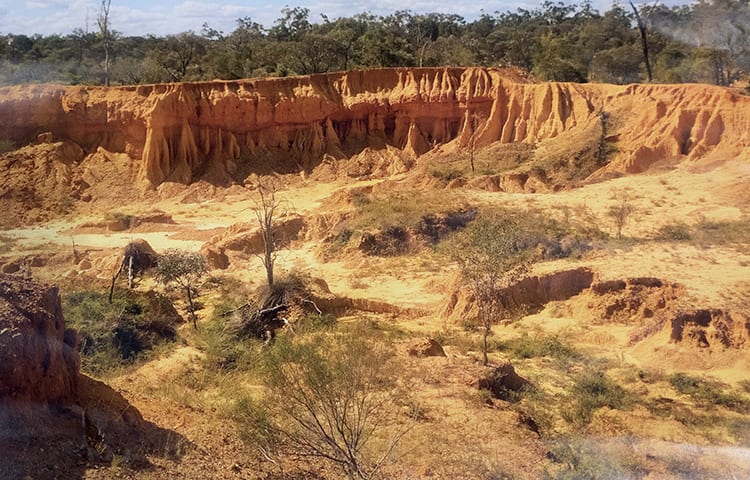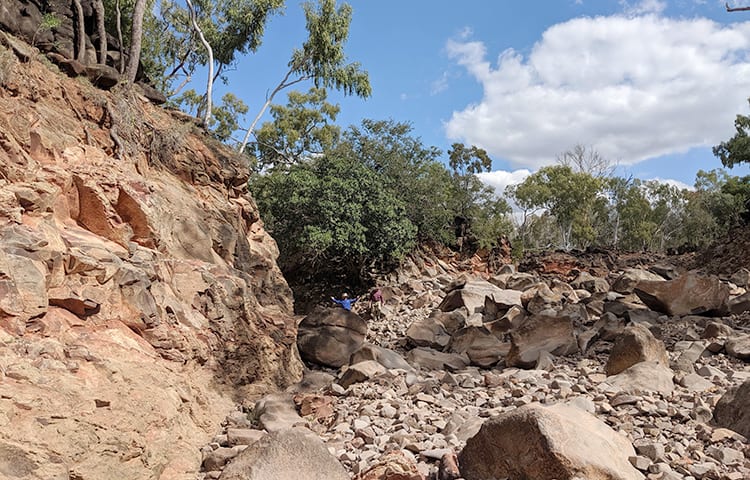
University report will inform landscape remediation plans
GRIFFITH University has delivered a report that characterises and prioritises the highest sediment producing gullies within the BBB catchment. Clusters of high and moderate-yielding gullies have been identified to focus sediment savings efforts.
A total of 22,300 actively eroding gullies in the BBB were mapped, providing a blueprint for future investment in large-scale gully remediation within the catchment.
Importantly, the report identified 73 priority “clusters” of gullies. Clusters of high and moderate-yielding gullies are most likely to be the most cost-effective places to focus resources for rehabilitation to achieve major sediment savings to help meet end-of-catchment water quality targets as identified in the Reef 2050 Water Quality Improvement Plan.
The report notes that there is a small number of high yielding gully clusters disproportionately contributing a significant proportion of the catchment’s sediment yield.
The report, Gully Rehabilitation Prioritisation in the Bowen and Bogie Catchments, was led by Griffith University Associate Professor Andrew Brooks and the university’s Precision Erosion and Sediment Management Research Group, in conjunction with the Australian Rivers Institute, James Cook University’s TropWATER,and engineering firms Alluvium and Verterra.
The final report has broken new ground in technical methods and approaches to gully work nationally and internationally, and has undergone technical review.
LiDAR (Light Detection and Ranging) was used to characterise and prioritise the highest sediment producing gullies within the BBB catchment.
LiDAR is a method for measuring distances with laser light (from a fixed wing aircraft in this instance) and measuring the reflection with a sensor. Differences in laser return times and wavelengths can then be used to make digital 3-D representations of the target, and high resolution maps from which erosion and sediment losses can be calculated across time.
The current footprint of LiDAR capture was directed at the known “hotspots” for active gullies identified through a preliminary mapping exercise undertaken at the start of the LDC project.
This final report is the result of many years of effort including an initial gully prioritisation report in July 2018, which provided the basis for the initial large scale gully remediation efforts for the LDC project at Mt. Wickham and Glenbowen.
A technical report was produced in December 2018 on a methodology for mapping large-scale gullies. Detailed site plans and remediation concept plans for large scale gully complexes across five properties were completed during 2019 and early 2020, with this final report completed in June 2020.
Here is more information about how LDC is piloting a suite of gully repair approaches in the BBB catchment area.
Griffith University Associate Professor Andrew Brooks.
A gully at Mt Wickham.
LiDAR helps to produce 3D maps
LiDAR (Light Detection and Ranging) allows scientists and mapping professionals to examine natural and man-made environments with accuracy and precision.
Airborne LiDAR is a remote sensing method that uses light in the form of a pulsed laser to measure distance to the ground.
These light pulses combined with other data recorded by airborne systems generate precise, three dimensional information about the shape of the landscape and its surface characteristics.
The data, combined with historical air photos, can be used to reconstruct gully erosion rates and sediment yields.
This information is critical for determining sediment savings and the cost-effectiveness of rehabilitation treatments.
LiDAR will also provide information used in the design of on-ground remediation works.

